Laksa battle in Katong and beyond — but which stall still follows the original recipe?
There are several Katong Laksa brands across the island that have a claim to be the original gold standard. Which is serving up the real deal? The programme On The Red Dot digs into the stories of rival hawkers.
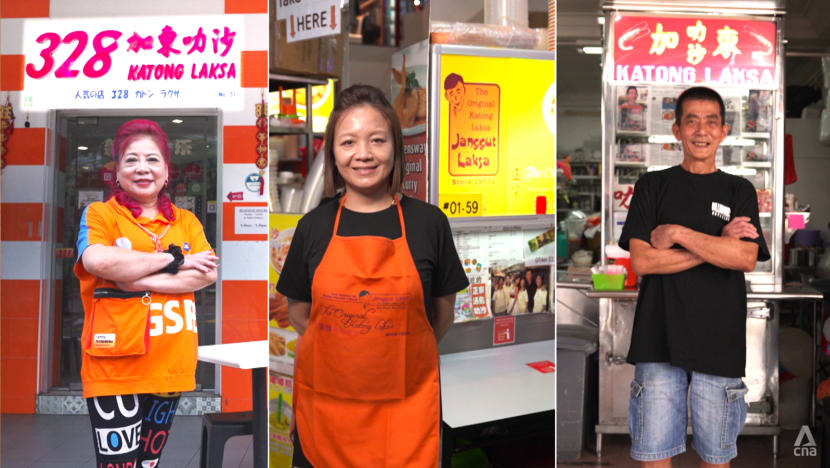
Rival hawkers behind some of Singapore’s famous Katong laksa brands. From left: Lucy Koh, Tong May Fong and George Ng.

This audio is AI-generated.
SINGAPORE: Celebrity photographer Russel Wong was growing up in East Coast Road, a boy of about six years old, when he first tasted the original Katong Laksa. The memory has stuck in his mind even now.
“It didn’t have hum (cockles). It was just fish cake and shrimp and a great gravy with daun kesum, the laksa leaf,” said Wong, 62. “(It was) eaten with a spoon, which is important.
“When you say Katong Laksa, it’s like the gold standard.”
It is one of Singapore’s famed food names, no less. And a stretch of East Coast Road, near the block of flats where Wong lived, became the site of the Katong Laksa war in the late 1990s as noodle sellers came up with their own variations.
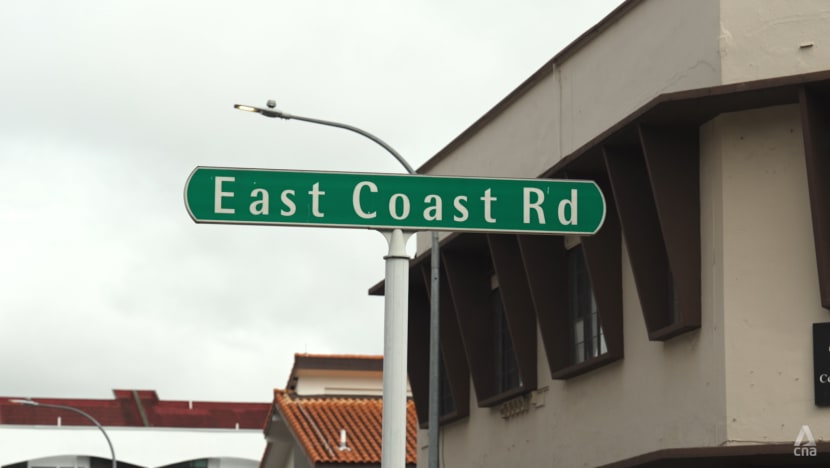
“Because of the strong brand and the success of the dish, everyone jumped on (the bandwagon) and started calling themselves Katong Laksa,” he recalled.
“People got really confused when all the outlets started sprouting around Singapore. They’d go, ‘Hey, is this a franchise? Is this from the real one?’”
These stalls throughout Singapore are not all from the same franchise. But one of the brands — 328 Katong Laksa — is now the “most famous”, according to Wong and Gavin Chan, 39, a founding member of community group Katong Culture.
The reason for this, cited Chan, was the showdown with Gordon Ramsay in 2013, when Singtel invited the international chef to compete in its Hawker Heroes Challenge.
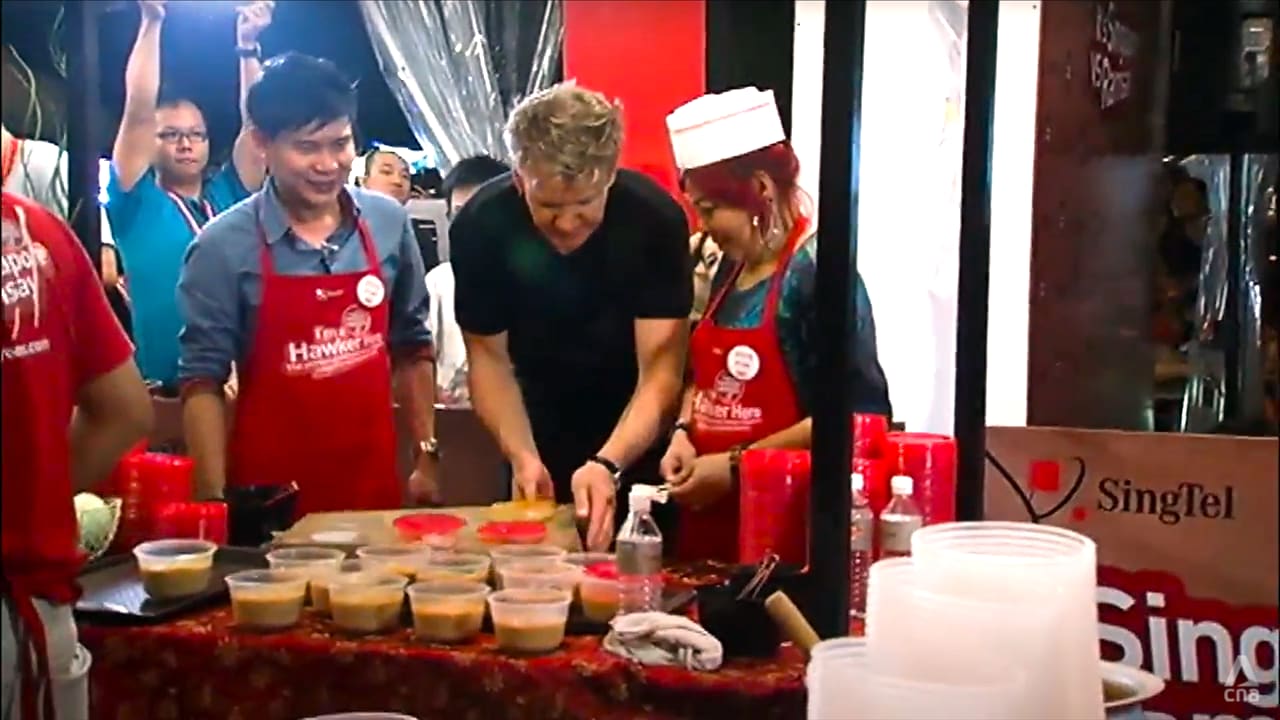
In the laksa category, the public voted for 328 Katong Laksa, whose owner Lucy Koh (or Nancy to her regulars) remembers that Ramsay’s laksa “wasn’t as authentic, as it had more of a Western flavour”.
It was not the first time, however, that her laksa had generated publicity. The first celebrity to visit her after she started selling laksa in a Katong coffee shop was Hong Kong star Tony Leung — 25 years ago.
Notwithstanding her claim to fame, the 60-year-old acknowledged that she was not the originator of Katong Laksa.
So who is serving the original Katong Laksa? The programme On The Red Dot digs into the stories of rival hawkers in the series Food Feud — and also finds out whether original means better.
WATCH: Singapore laksa war — Which stall has the original Katong laksa recipe? (22:52)
JANGGUT LAKSA
Koh started selling laksa at 49 East Coast Road, at the junction with Ceylon Road, in 1998. Before that, there was already a “very famous” laksa stall there, set up by a hawker whose laksa she had eaten twice.
“I didn’t ask him about his secret recipe,” said Koh. “My current secret recipe is my own.”
The previous stall was named Marine Parade Laksa. “But all of us (Katong residents) called it Janggut Laksa,” recalled Wong. “Of course, there was no sign that said Janggut Laksa, because that was his nickname.”
In Malay, “janggut” means beard. And the hawker, Ng Juat Swee, had hairs coming out of a mole on his chin.
His Peranakan neighbours were the ones who taught him how to cook laksa, said Tong May Fong, current co-owner of Janggut Laksa. “He was very innovative. He made it his own. He improvised it, which became his secret recipe.”
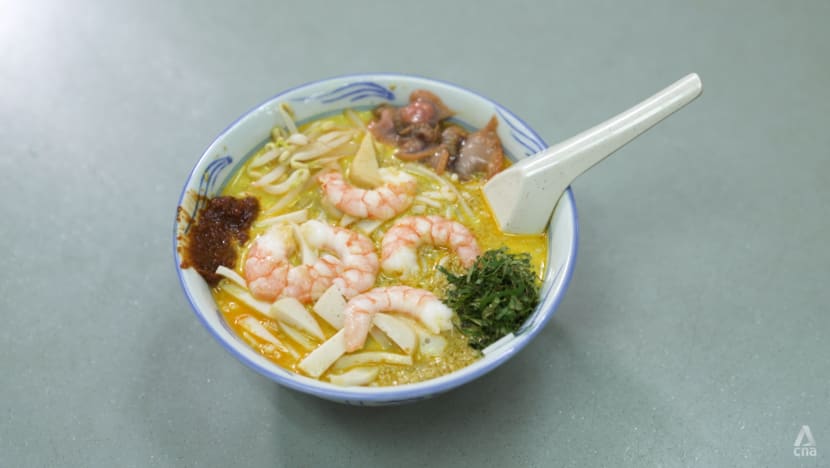
He started out as an illegal hawker in 1952, walking around the Marine Parade area with metal pots hanging from a pole on his shoulders.
“To avoid the teh gu (public health inspector) catching him, … he (snipped) his noodles so that customers could eat quickly in the event (that) the enforcement officer came (along),” narrated Tong. “It became the trademark of our Katong Laksa.”
As Singapore developed and illegal street hawking was further discouraged, he set up his stall in 49 East Coast Road in 1963.
“It became popular,” said Tong. “So people started calling (it) the shortcut way, ‘Katong Laksa, Katong Laksa.’ And this was how Katong Laksa was born.”
After Janggut died in 1986 at the age of 85, his younger brother’s family continued the business.
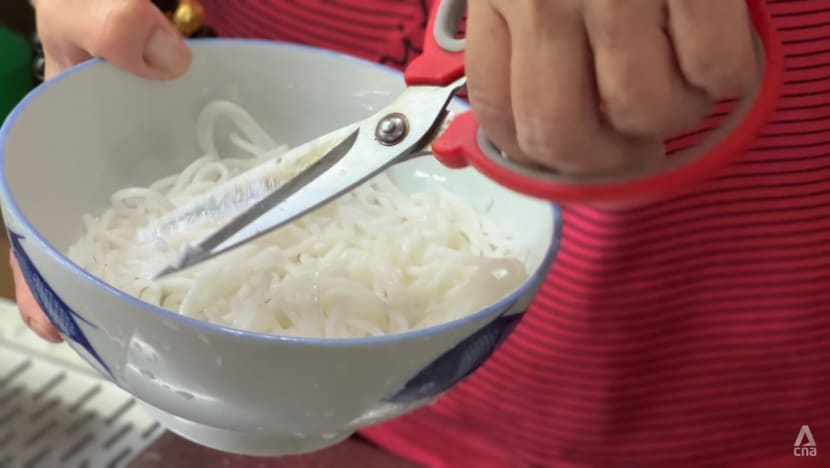
Janggut’s children “weren’t interested in selling laksa”, said Tong’s mother and co-owner of Janggut Laksa, Tan Siew Suan, who came to join the business because she was “very good friends” with his niece, Ng Sway Hong.
“At that time, I was selling roasted meats in Toa Payoh,” recounted Tan. “Sway Hong asked me to join her, so I stopped selling roasted meats and (we) sold laksa together.
“She’s retired, after working for more than 30 years. Working in this line is very tiring.”
A BATTLE FOR BRAGGING RIGHTS
Competition between stalls was especially intense from 1998 to the early 2000s.
Koh was selling laksa for almost a year when the boss of the 49 East Coast Road coffee shop “wanted it back for herself”, she recounted. Koh moved to number 51, while the coffee shop had its own laksa stall.
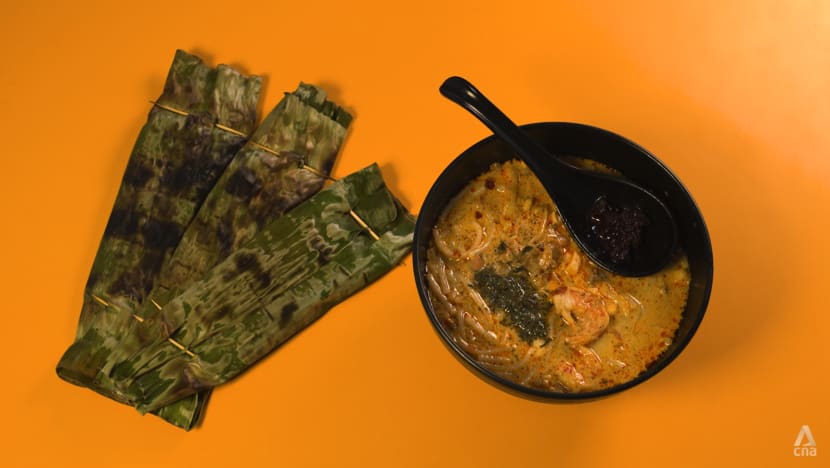
That was the “trigger point” for the Katong Laksa war, said Chan.
Marine Parade Laksa had also reopened at 57 East Coast Road, this time as Janggut Laksa. And there was another laksa stall at number 47.
“Because there were four stalls, … people were curious as to why there was so much competition,” Koh recalled.
Such was Katong Laksa’s popularity, “coupled with the media coverage on TV and radio”, that it seemed to Chan as if “the entire Singapore” was in Katong to grab a bite. “(It was) a sight to behold,” he said.
The conclusion to the battle for bragging rights came when Koh’s laksa “became the most prevalent … not just in Katong but (in) Singapore”, he opined.
“She’s widely recognised as the one who has the most popular Katong Laksa stall — with Janggut coming in a close second, being recognised as the stall that (is linked) to the originator of that taste of Katong Laksa.”
Today, Janggut Laksa is also known as The Original Katong Laksa, with a new flagship location in Roxy Square, where its Katong Laksa signage takes up a “huge portion of the food court”, observed Wong.
And as far as Tan is concerned, “there’s never been such a laksa before”. “We’re the most authentic,” she said. “We still use Janggut’s original laksa recipe … (and the) original ingredients according to what he’d instructed.”
The few changes made since the 1950s include the switch from charcoal to gas stoves, plus the addition of cockles, which “customers wanted … and we accommodated”, cited Tong.
Customer feedback is “the most valuable” because they have been eating “the same bowl of laksa” for generations, she added. “The taste is still the same.
“This secret recipe can’t be found anywhere else. … The rempah (spice paste) is unique. If you taste it, you’ll know it.”
WATCH: The story of Janggut, creator of The Original Katong Laksa (5:11)
ROXY LAKSA
Some other stalls, however, have claimed to have the original Katong Laksa recipe. Wong knew of one: Roxy Laksa.
“The owner was a friend of Janggut. I think Janggut gave him the recipe to help him out, and he was selling (from) a pushcart,” said Wong.
“The base of Roxy Laksa, just from tasting it, obviously came from Janggut. It had that similar flavour.”
The owner, Lim Kok Seng, started his business in 1952 at Roxy Theatre. In the 1970s, his son, Lim Eng Hock, started selling his own laksa from a pushcart.
“He called it Roxy Laksa too, but he changed the recipe because he wanted to be completely different from his father,” narrated chef Willin Low, 52, who now shoulders “the responsibility of carrying on Roxy Laksa”.
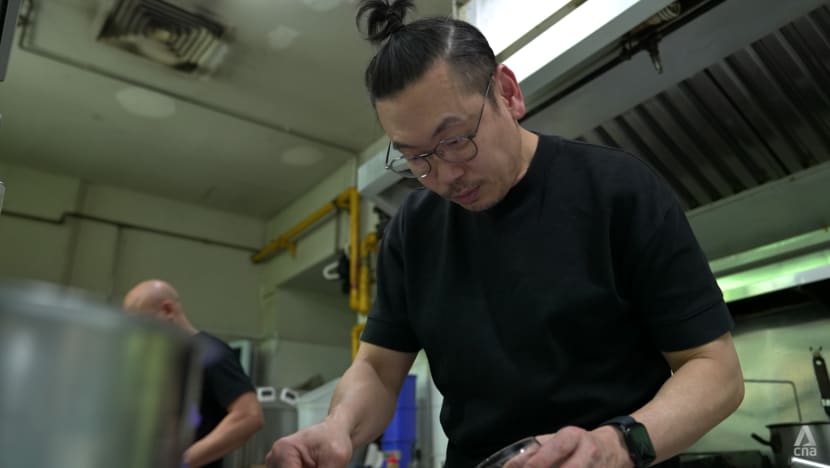
In 1978, Roxy Theatre closed, and the elder Lim ceased plying his laksa. His son carried on but “upgraded” to a stall at the East Coast Lagoon food centre. Then in 1981, Lim Eng Hock’s son, Mike, started working with him before taking over.
Low had been a Roxy Laksa customer for more than 20 years, and was friends with the third-generation owner, when he took over the helm. “In 2015, I was chatting with Mike while eating laksa,” recalled Low.
He told me that he wanted to retire, and he trusted me. And he knew I loved the laksa.”
By this time, however, it did not taste like Janggut’s laksa any more.
“Mike’s recipe was also different (from his father’s) because he didn’t make the laksa out of a rempah. He pulled different things together, and he never cut his noodles. You always ate the laksa with chopsticks,” said Low.
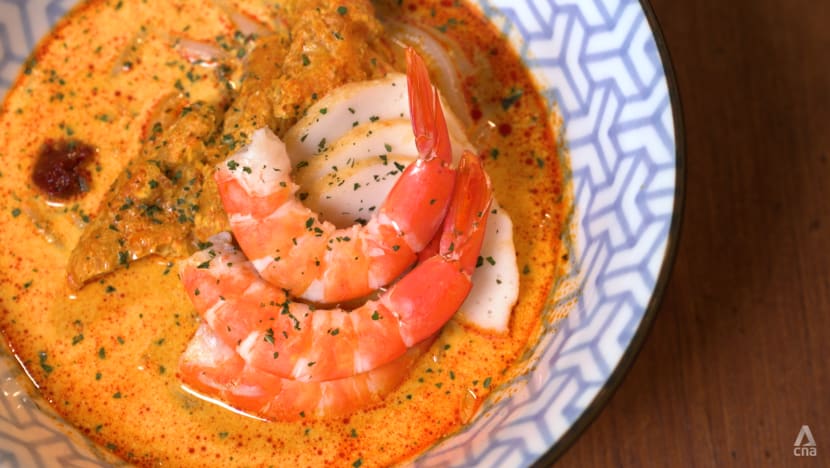
GEORGE’S, AND A TASTE TEST
Another stall with Janggut roots is Katong Laksa in Changi Road. Its owner, George Ng, 71, has been cooking the dish for about half a century and registered the Katong Laksa name around 1982.
“My father wanted the name,” he said. His father, a provision merchant with a shop in Jalan Eunos, had a “very friendly” relationship with Janggut, who would come by the shop when he had a day off, recounted Ng.
In 1955, “because of financial difficulties”, his father asked Janggut for help. “Janggut taught the recipe to my father. Then … my father sold laksa (from a pushcart) around Telok Kurau,” said Ng, who learnt the recipe from his father.
“Until now, I’ve never changed anything (in the recipe) because my father was very strict (about this).”
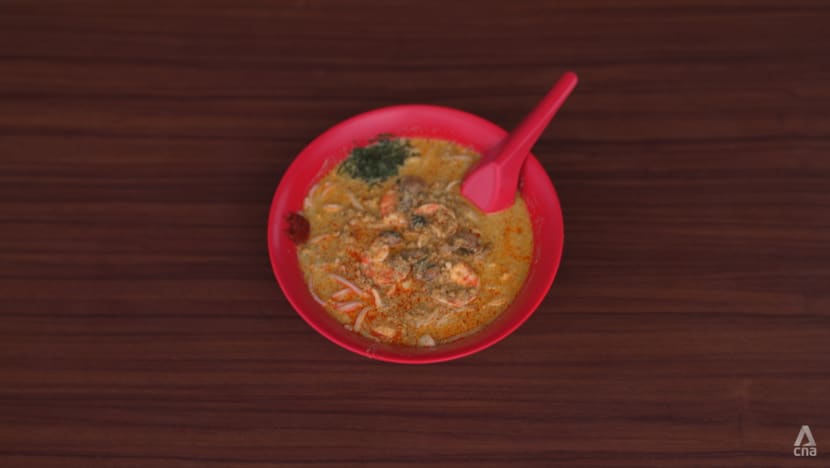
Since his stall and Janggut Laksa were “the only ones” following the original recipe — as was apparent to Chan — a taste test was done to find out which was closer to the original Katong Laksa.
Four Katong residents in their 60s and 70s who have tasted the original were invited to be taste testers. And all of them had ways of describing what it should be like.
“Not too pasty, more fragrant and slightly watery,” cited Jessy Tan, while Lilian Chua said: “The colour of the kuah (gravy) has to be a bit more orangey, not yellow.”
“The gravy … shouldn’t be thick,” said Fong Siew Hock. “The prawns they use must be sua lor (sea-caught sand prawns) because they have a sweeter taste.”
And for Tan Wu Cheng, the original Katong Laksa is all about the lemak (creaminess of the coconut milk).
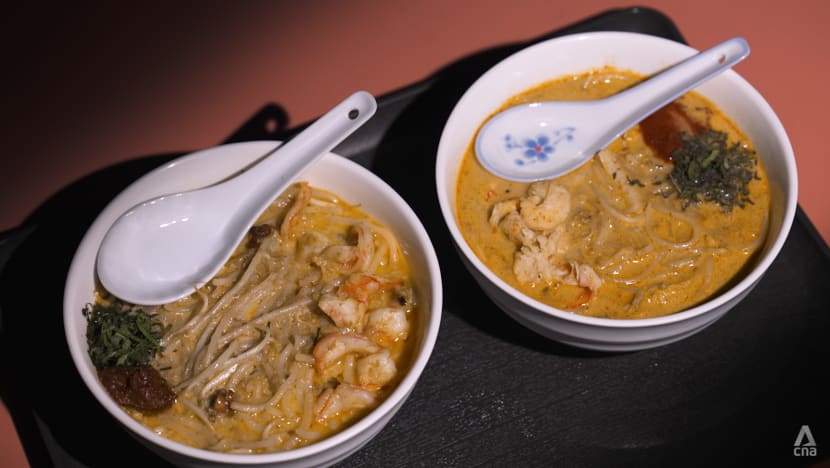
When all was said and done, the majority went for Janggut Laksa.
“George has also carved his own niche. There are elements … that bring back memories of the original Katong Laksa,” said Chan, referring to the flavour and fragrance.
“But there are also elements that have deviated from the original, such as the use of chilli with vinegar, which isn’t what the original Katong Laksa would’ve (had).
“Although not unanimous, you could say that Janggut Laksa has defended its claim to be the original Katong Laksa.”
Watch this episode of the Food Feud series here. Click to also watch the episodes on ang ku kueh and on bak chor mee. The programme On The Red Dot airs on Channel 5 every Friday at 9.30pm.














